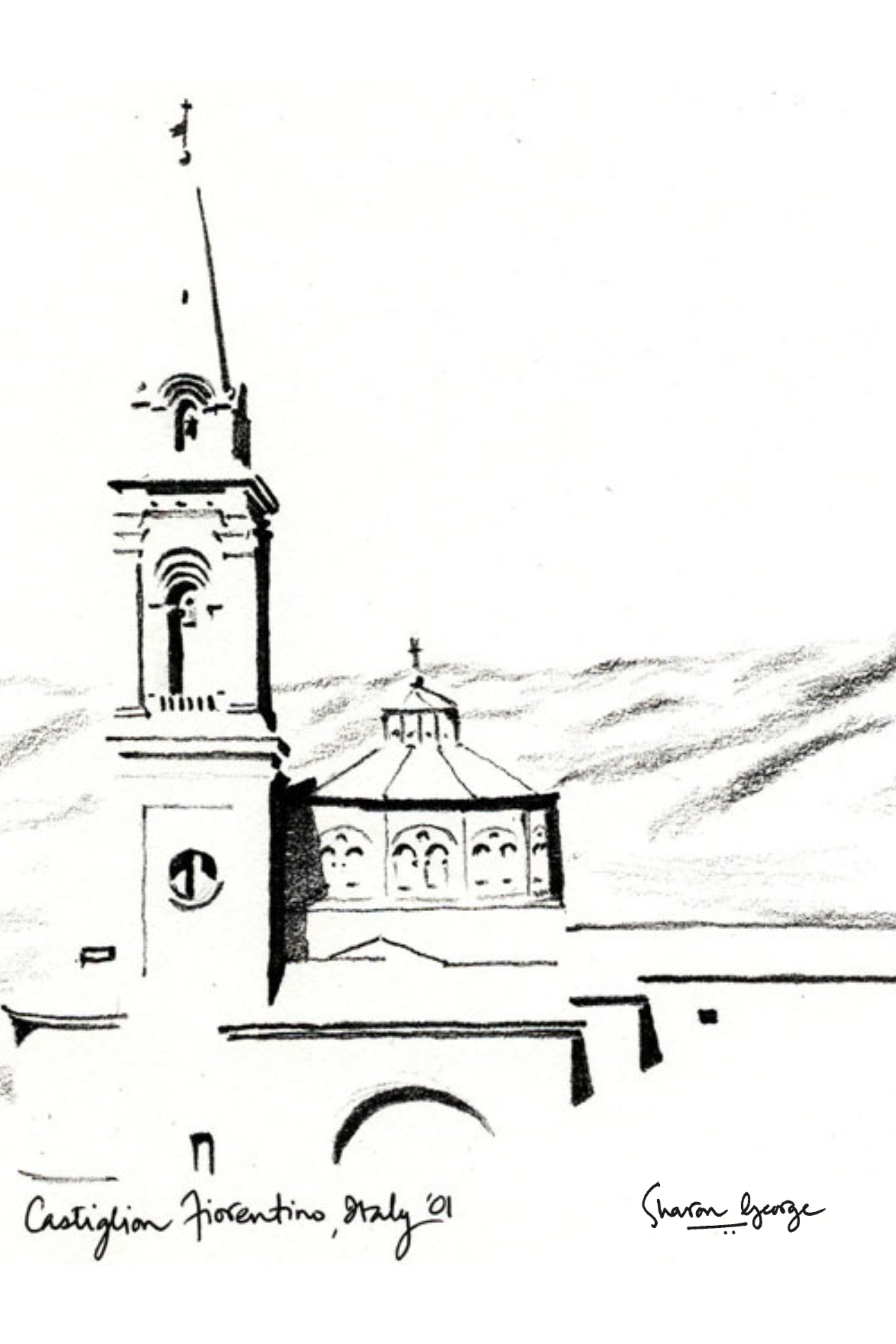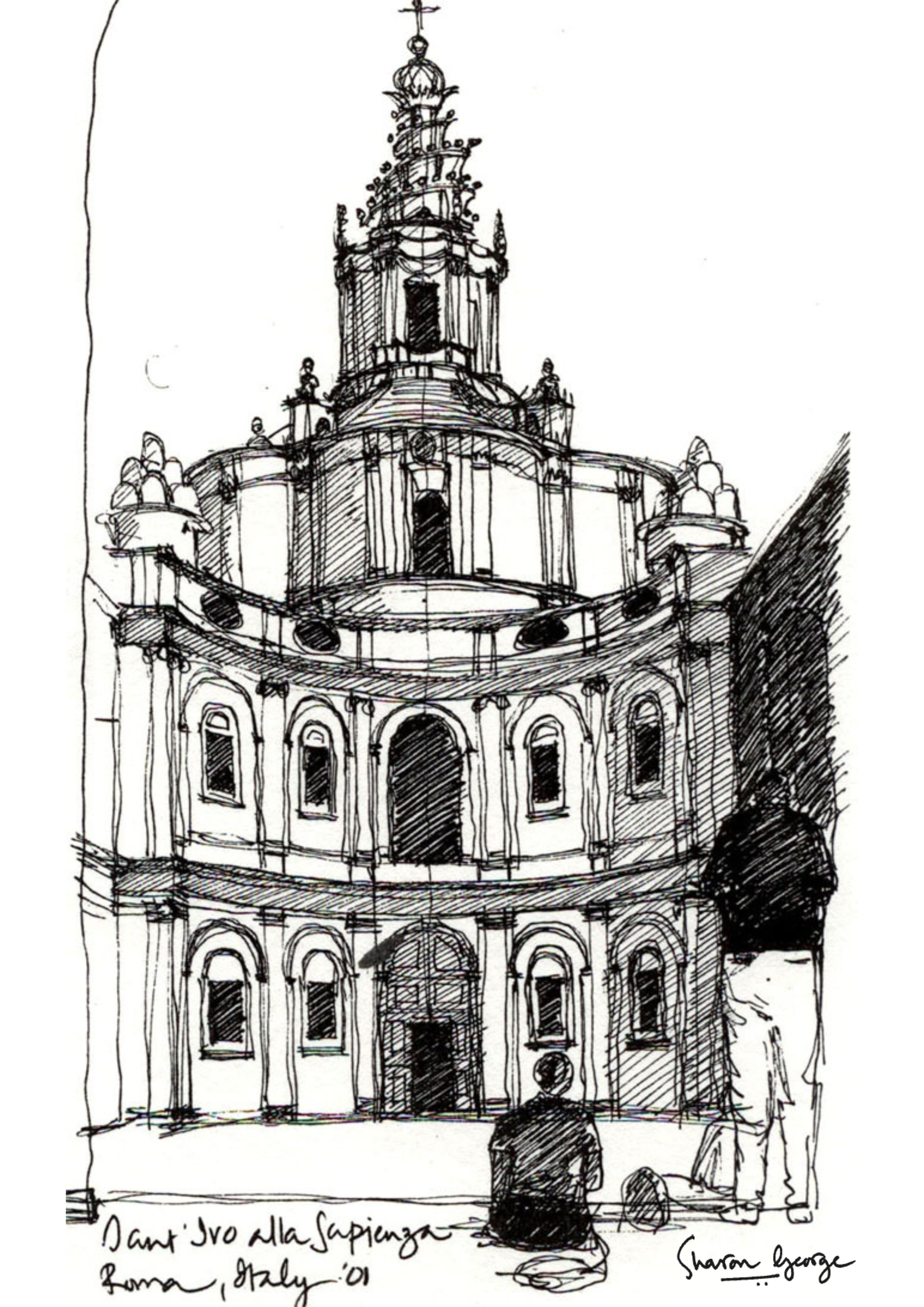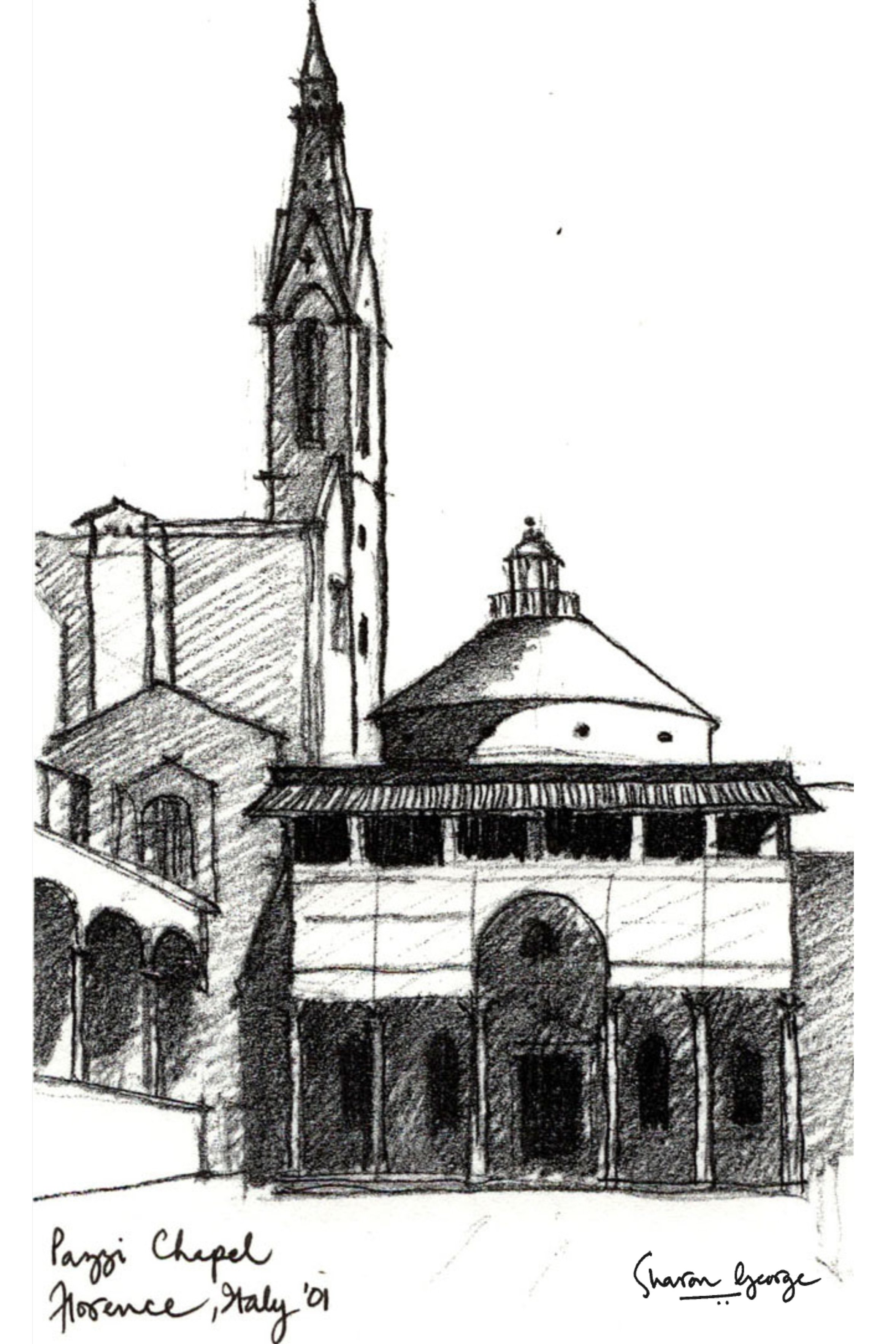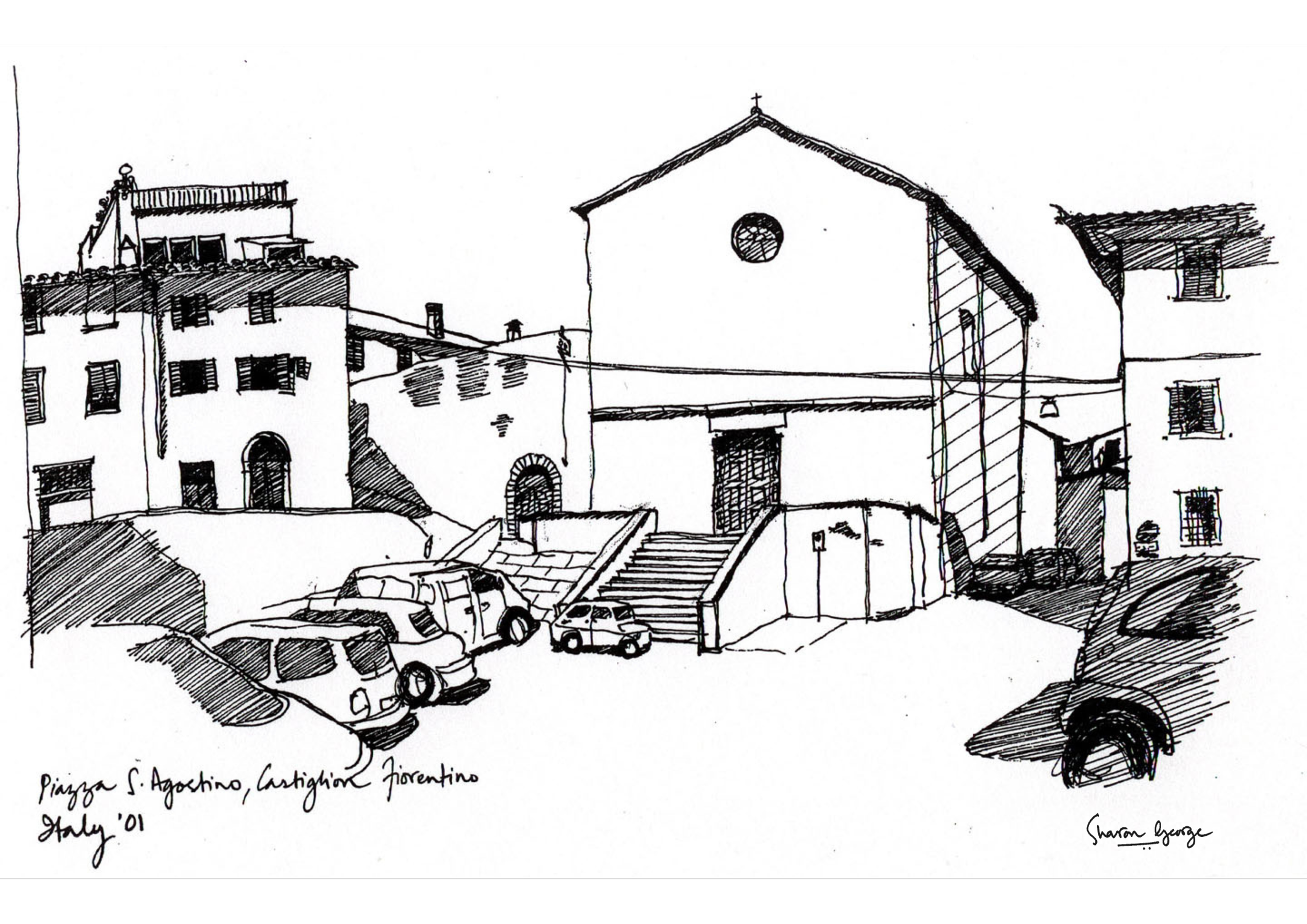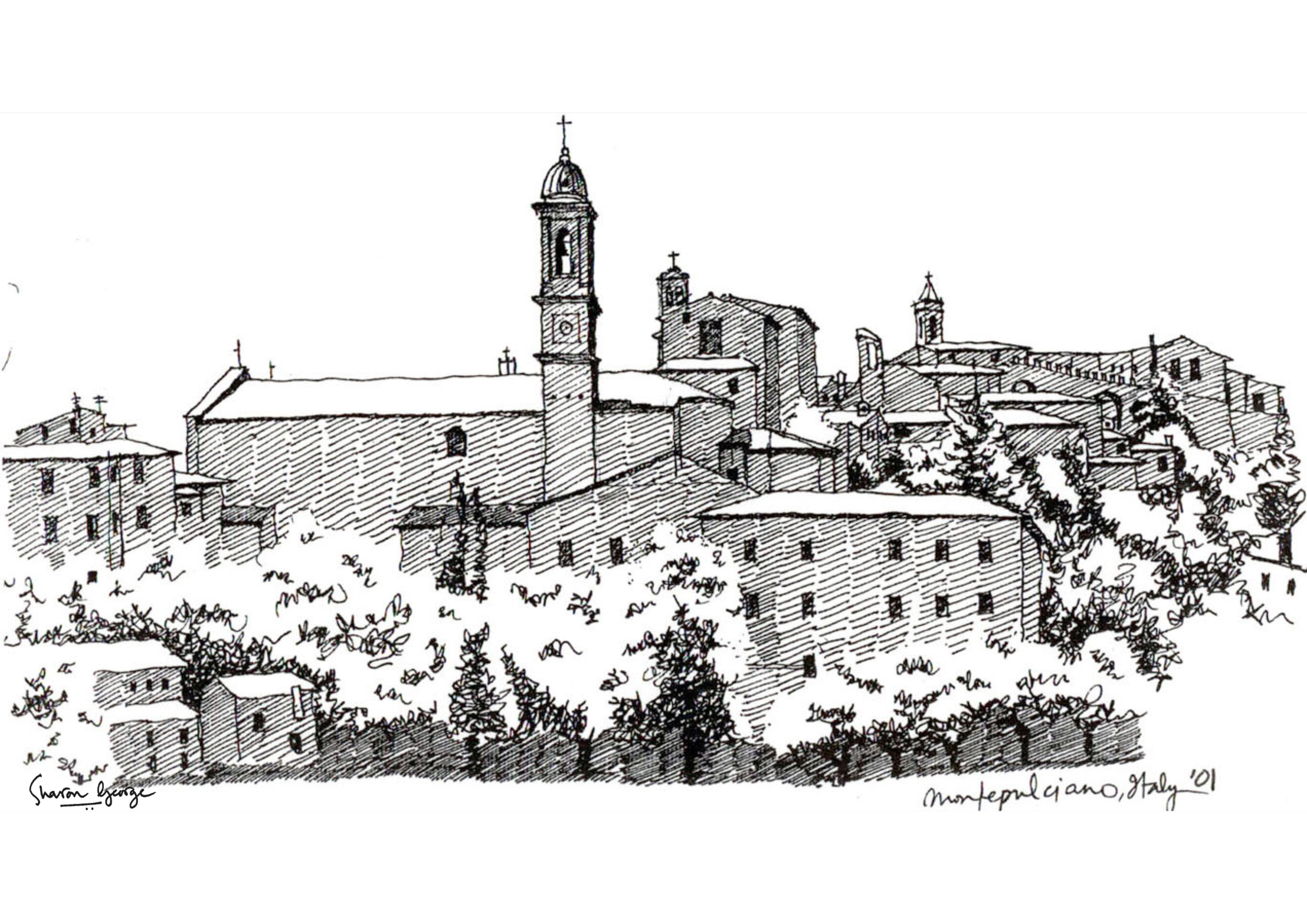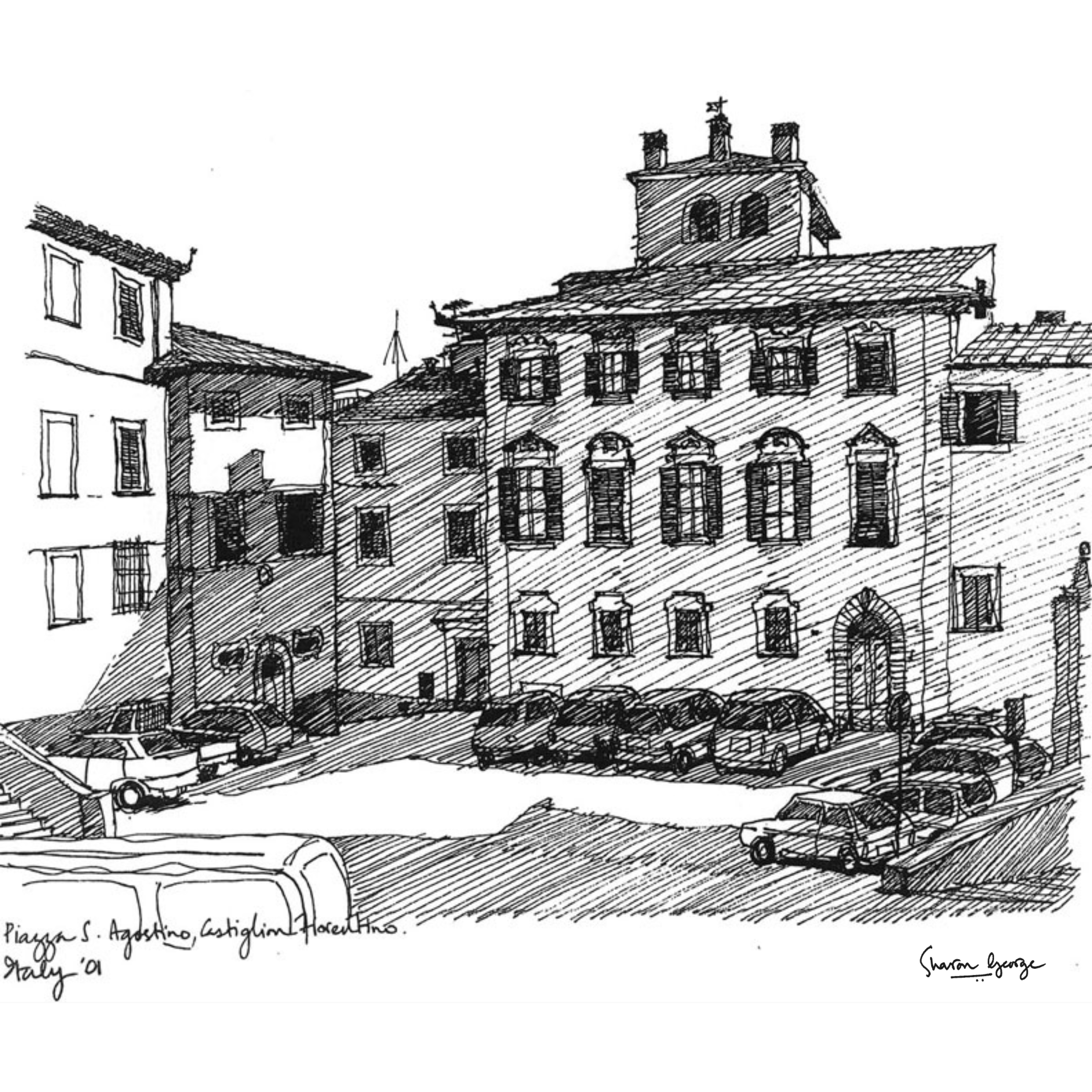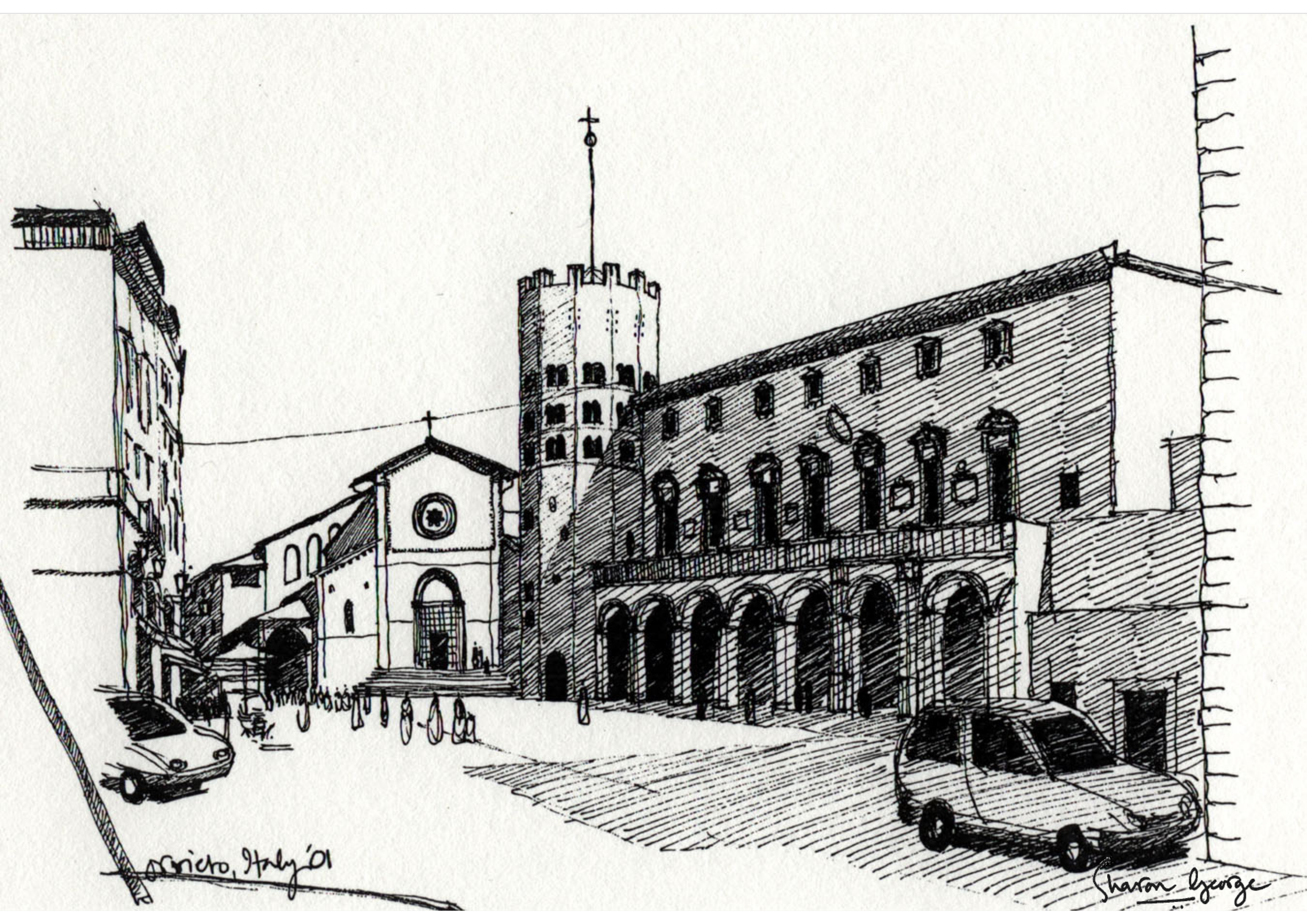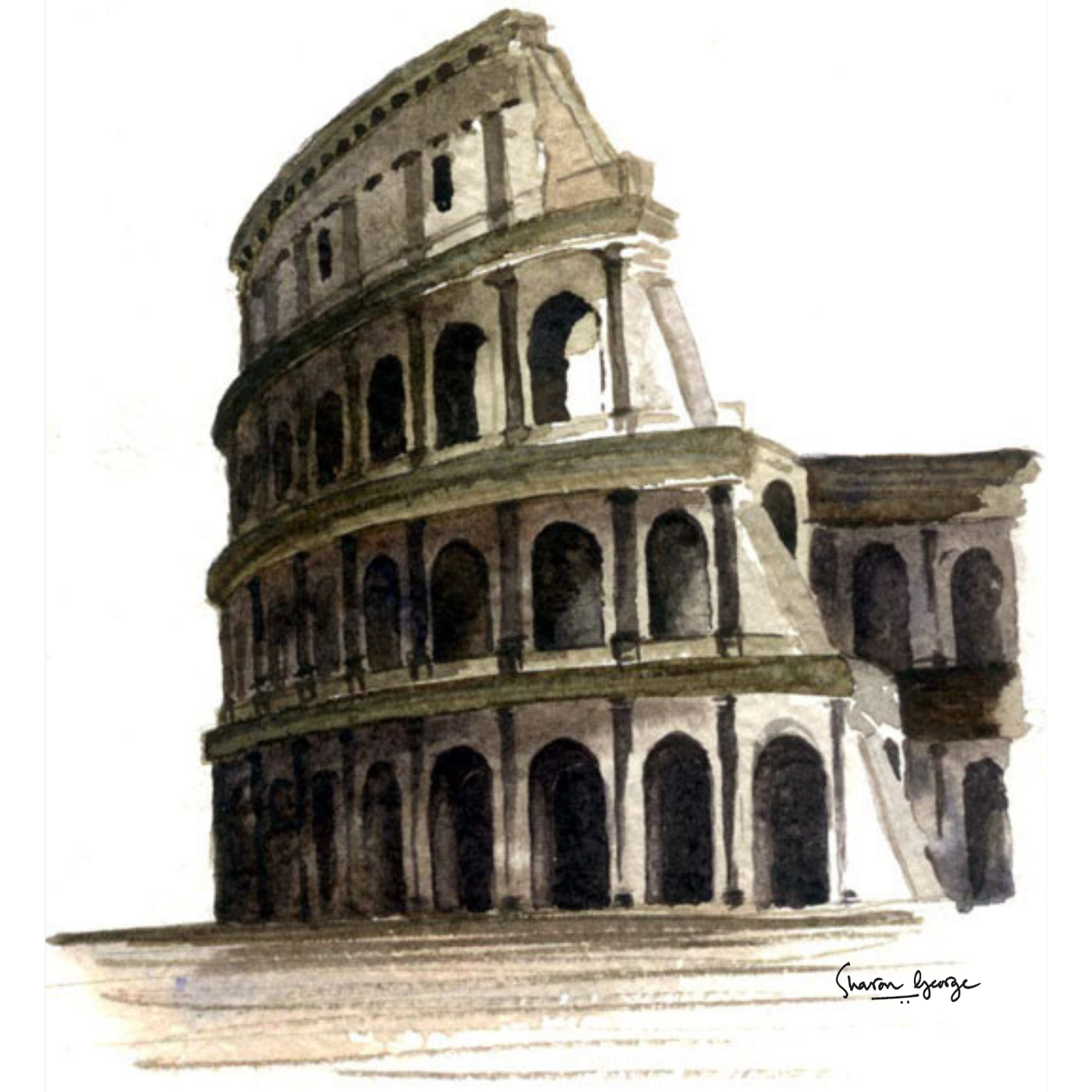This summer marks 15 years since my study abroad program in Italy. It's a time that is very special to me, not only because it was 3 months in food/ culture/ fashion/ landscape/ architecture heaven, but it's when I really refined and owned my architectural sketching skills. It has served me well all the years since. So, to commemorate, I would like to share my collection of sketches from Italy. Not just the best ones, but the scrappy sketches as well, because they tell the story of a rough start and how I got good.
Italian splendor
Churches with domes, arches, columns, spires, rosettes, crenelations, piazzas, hill towns, cityscapes, streetscapes, intricate facades, window shutters and planter boxes - everywhere you turn, the scenery is rich with sketch frames.
Study Abroad for the win! How did I get there?
I learned about the summer program in Italy when I was in my second semester at the University of Texas at Austin. I was an international student on a shoestring budget, paying my way through grad school on a meagre stipend as a teaching assistant. I had no savings and no financial support to go gallivanting through the Italian countryside just to tickle my wanderlust.
But...but...the program sounded so amazing. We were going to be living in a quasi education center called Santa Chiara, in a little Etruscan town called Castiglion Fiorentino in the heart of Tuscany. And we would travel to Milan, Florence, Rome, and Venice, not to mention all the little towns near Castiglion, to study the art, architecture, and history of the cradle of the renaissance. I'm no history buff, but tell me you don't want to check out the seat of the Roman Empire or the center of the largest and oldest religious institutions in the world! Not just visit the Sistine Chapel as a tourist, but really dive deep into what, why, and how.
Oh, and my professor was doing an architectural sketching studio and we would draw every afternoon. S O L D.
I borrowed money and paid up. I was able to return my debts over the course of the next year. I've never been back, because sadly, I haven't had the time. Work and life...
The immersive education that a study abroad program affords sure is a singular experience. I highly recommend it.
Architectural Sketching, pen and ink
This sketch of the Pantheon is my favorite. I did in less than 5 minutes. I remember walking up to the Pantheon with our whole group and everyone wanted to get inside in a hurry, because that's where the magic lies. I wanted to capture the exterior of the building and the life of the piazza outside. But, we had strict instructions to stick together. So, I took out my sketchbook and did this quick sketch as the other students were scurrying past me, and then ran inside to catch up.
I wasn't always that adept with a pen and sketchbook. In fact, pen and ink used to terrify me.
Drawing, a skill or a talent?
I've always been able to draw, ever since I was a kid. It was my only hobby, besides reading. The closest I came to taking my talent seriously was when I dabbled in weekend art competitions. My dad was good at it too and he nurtured my aptitude. My mom and sis were not, and showed no interest in learning. So naturally, I grew up thinking either you have it or you don't.
I never had any formal training, until I went to architecture school. We spent the entire first semester of studio, sketching and painting, which was arguably the best prelude to 5 years of architecture school. In later years, we learned to create one point, two point, and three point perspectives.
Pencil vs. Pen
I've always been very comfortable sketching with a pencil. With a soft (graphite) tip pencil, lines are looser and much easier. You can control the weight of the line with the force of your touch. You can start with a light touch and outline the shape and proportions before you fill with more detail. There is plenty of room for error.
You don't even need to know how to draw a straight line. See these sketches of David below - no straight lines! In fact, the looser your hand is and less perfect the squiggles, the better.
On the other hand, if you want to draw buildings, you do need to know how to draw a straight line. And also understand angles and perspective. All of which I did. And yet, my first few architectural sketches in Italy looked something like this. I was at a loss. Why couldn't I draw what was in front of me?
That was the good thing about being in a class. You are committed, you show up, and you don't give up. You have someone to guide you and show you the way. Almost every afternoon, we would go out to the neighboring towns for architectural sketching expeditions. With more regular practice, I graduated to these sketches.
Castiglion Fiorentino Italy Pencil Sketch
I was getting better. But I did not dare use a pen to sketch. 'Pen and ink' terrified me. In my mind, using a pen meant that there was one chance to get it right. Each stroke left an indelible mark.
So I challenged myself. I wanted to be able to draw with confidence, using pen and ink! I started out using a pencil to outline, and then I would trace over with a pen. Not great, but baby steps, right. This was my first sketch, just pen to blank sheet of paper. What's the worst that could happen?
Pen and Ink Sketch - Il Duomo di Firenze, Italy
Then, more confidence.
Finally to these.
Still life vs. real life - architectural sketching
Sketching still life is one thing and sketching real life architectural buildings, spaces, and piazzas is quite another. The vastness and amount of detail in the picture in front of your eyes can be overwhelming. So, you have to make it your goal to capture the scene with the fewest lines possible. Just the most essential elements.
Like this sketch - just the shadows and our minds fill the rest.
With a lot more practice and observation, I graduated to the level of architectural sketching that comes with ease and without trepidation. It looks something like this.
I left Italy with the confidence that I could sketch anything. And the understanding that sketching, just like anything else, can be taught and learned - it's a skill that gets better with practice, even for the talented.
I even did some watercolor, which is my current obsession.
Hope you enjoyed this tour of Italy. Drop me a line if you were at Santa Chiara on a study abroad program. And if you did the architectural sketching studio, I would love to see your sketches.
Cheers,
Sharon.
Note: All images of sketches and paintings are copyrighted © by Sharon George and may not be downloaded or reproduced. The use of any image from this site is prohibited unless prior written permission from the artist is obtained.

